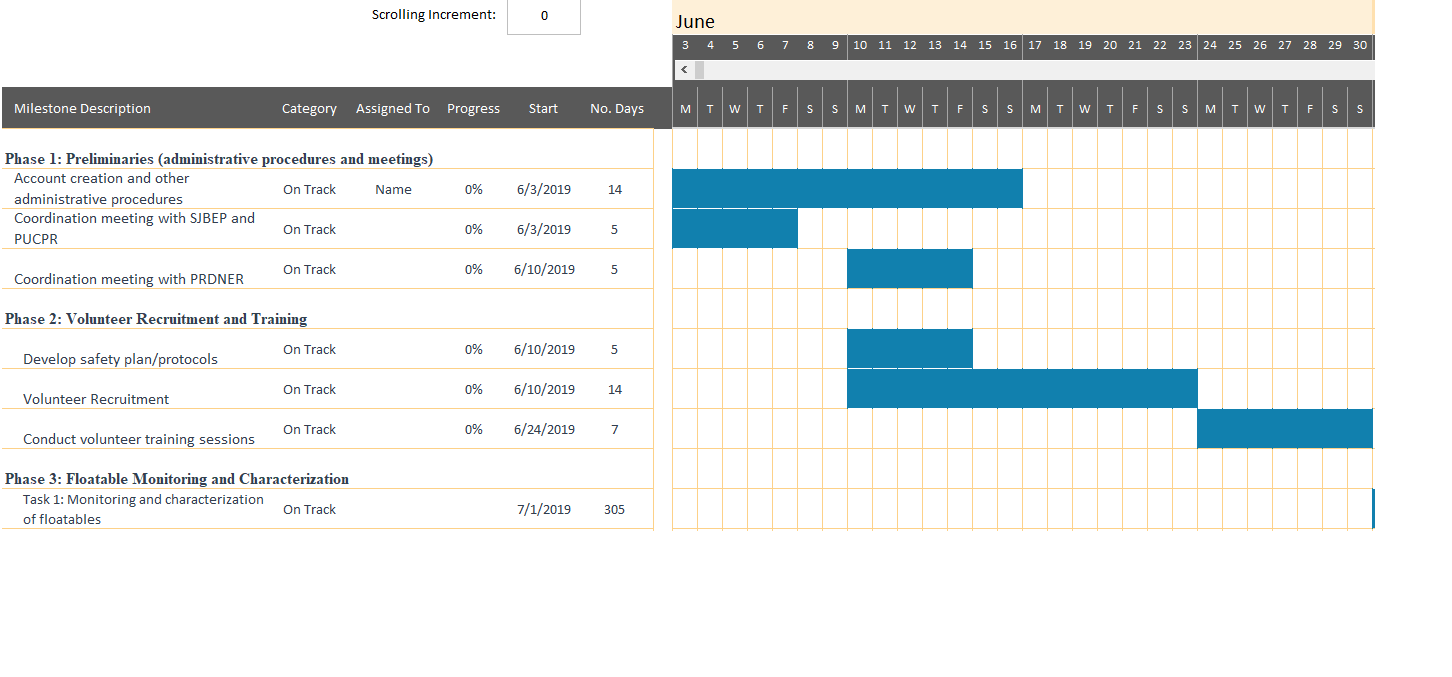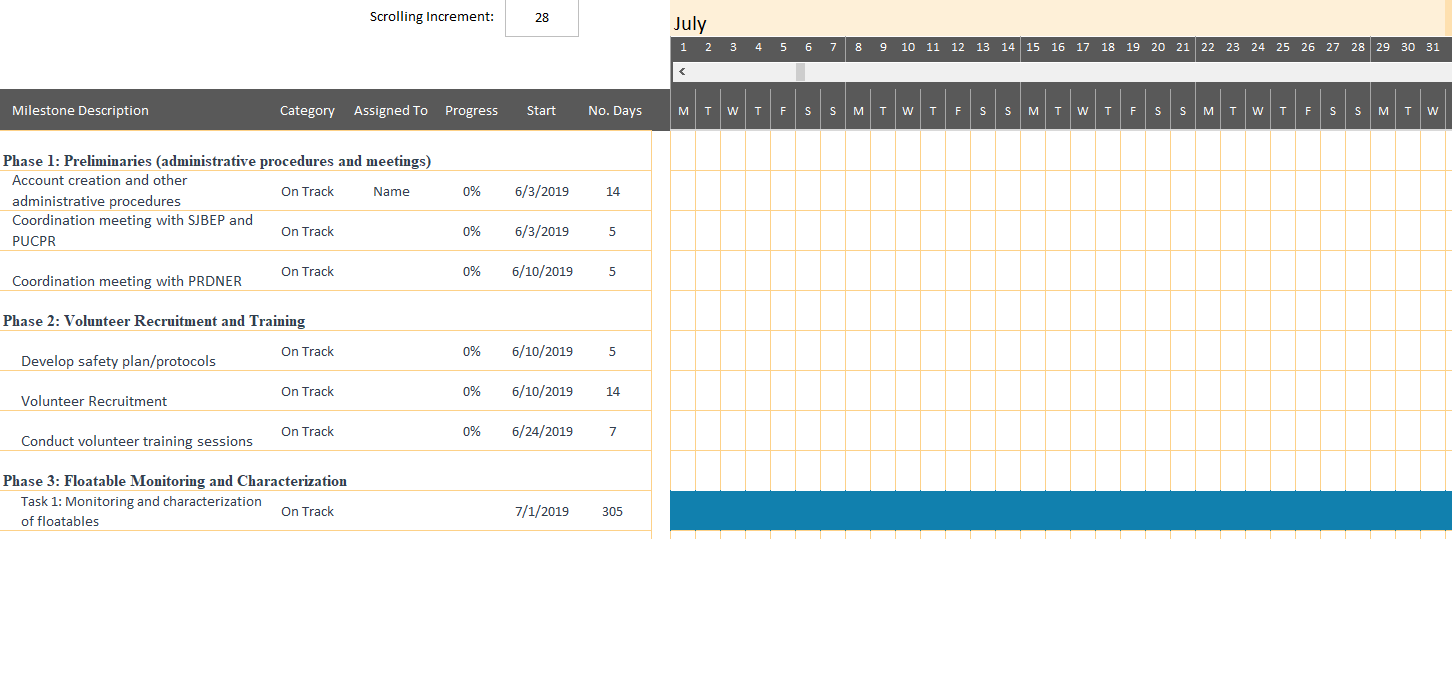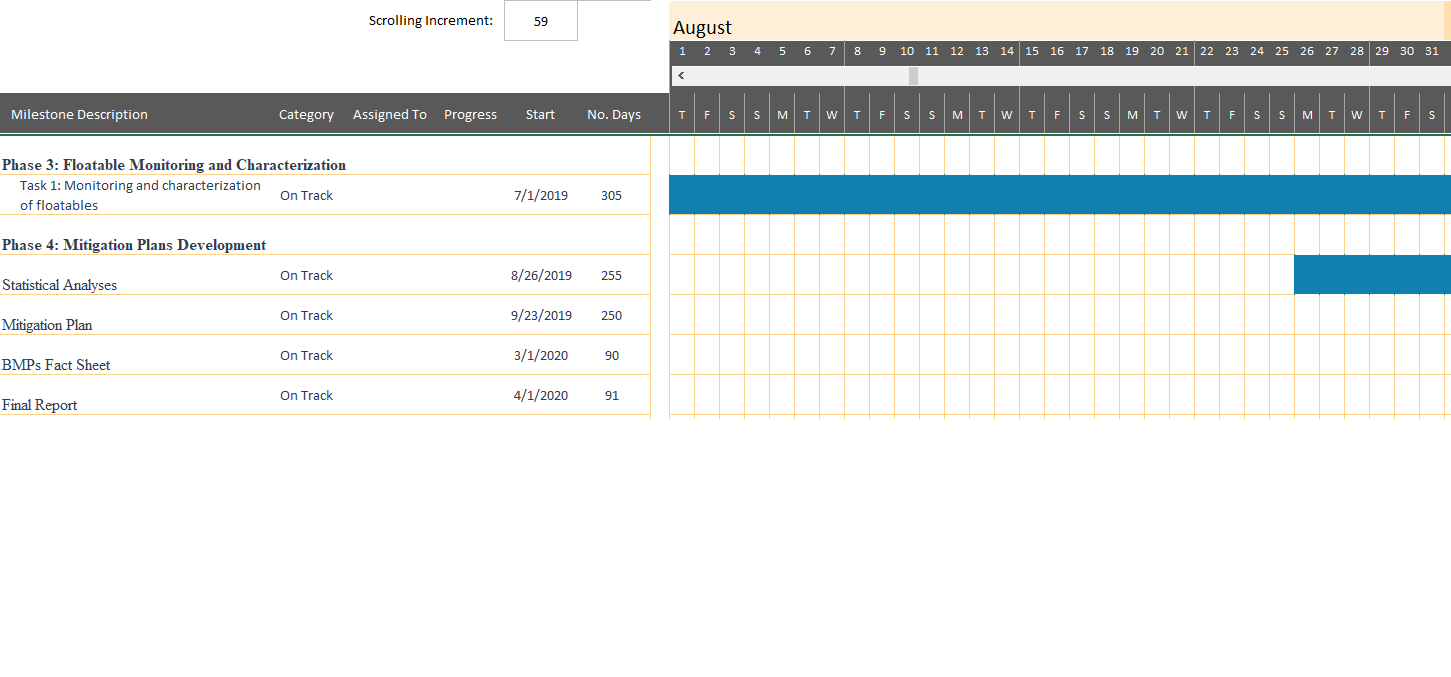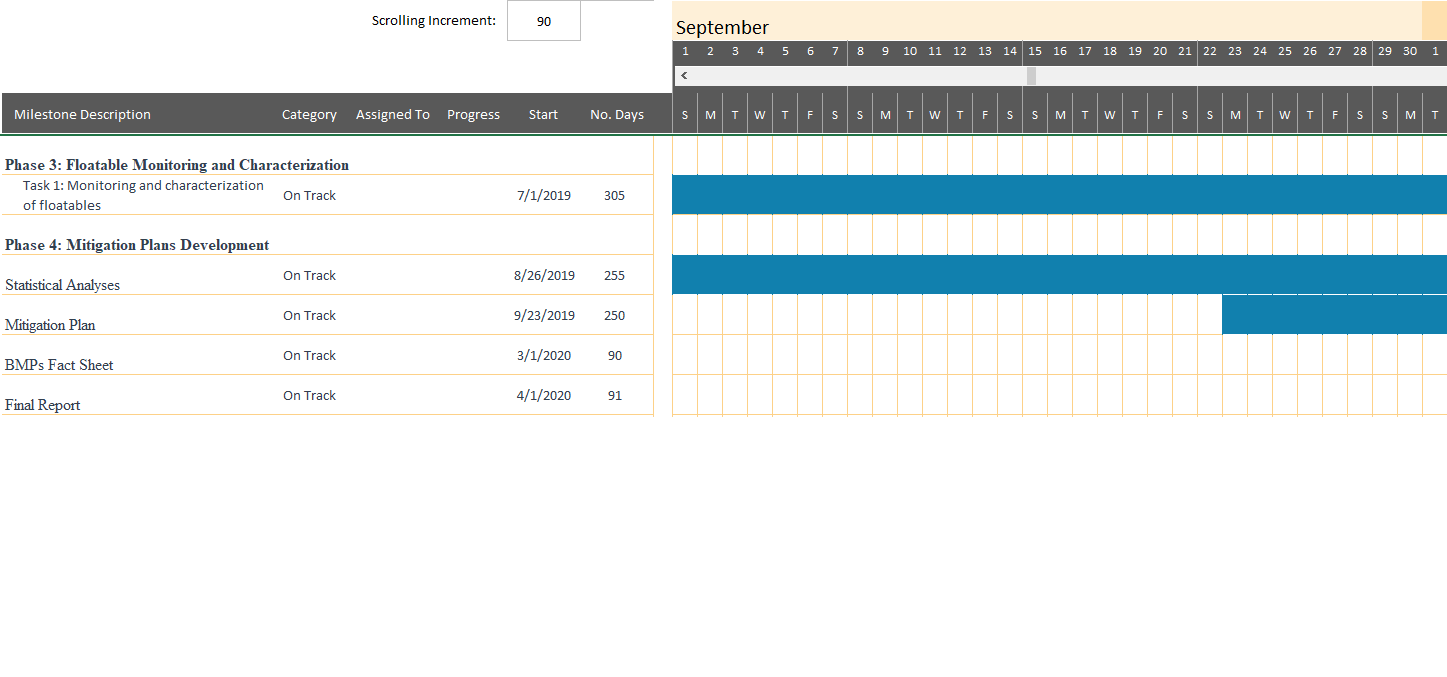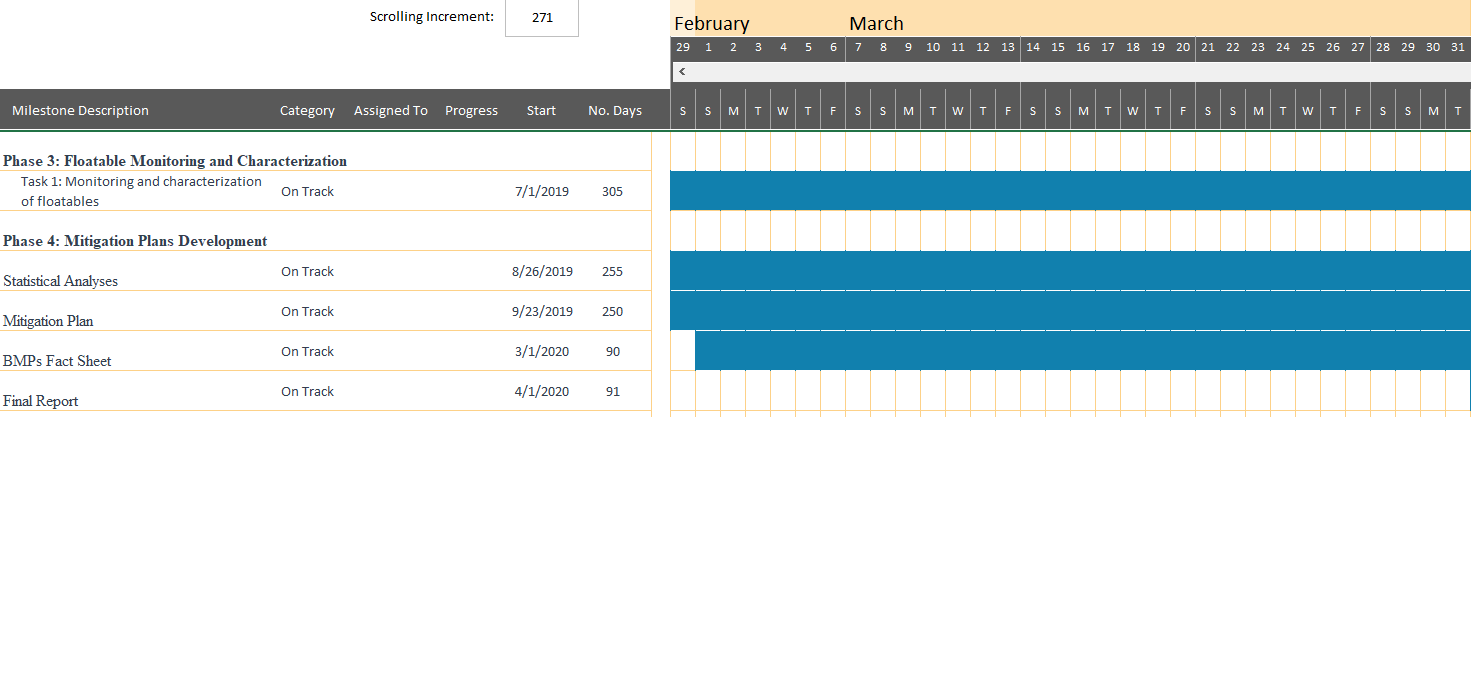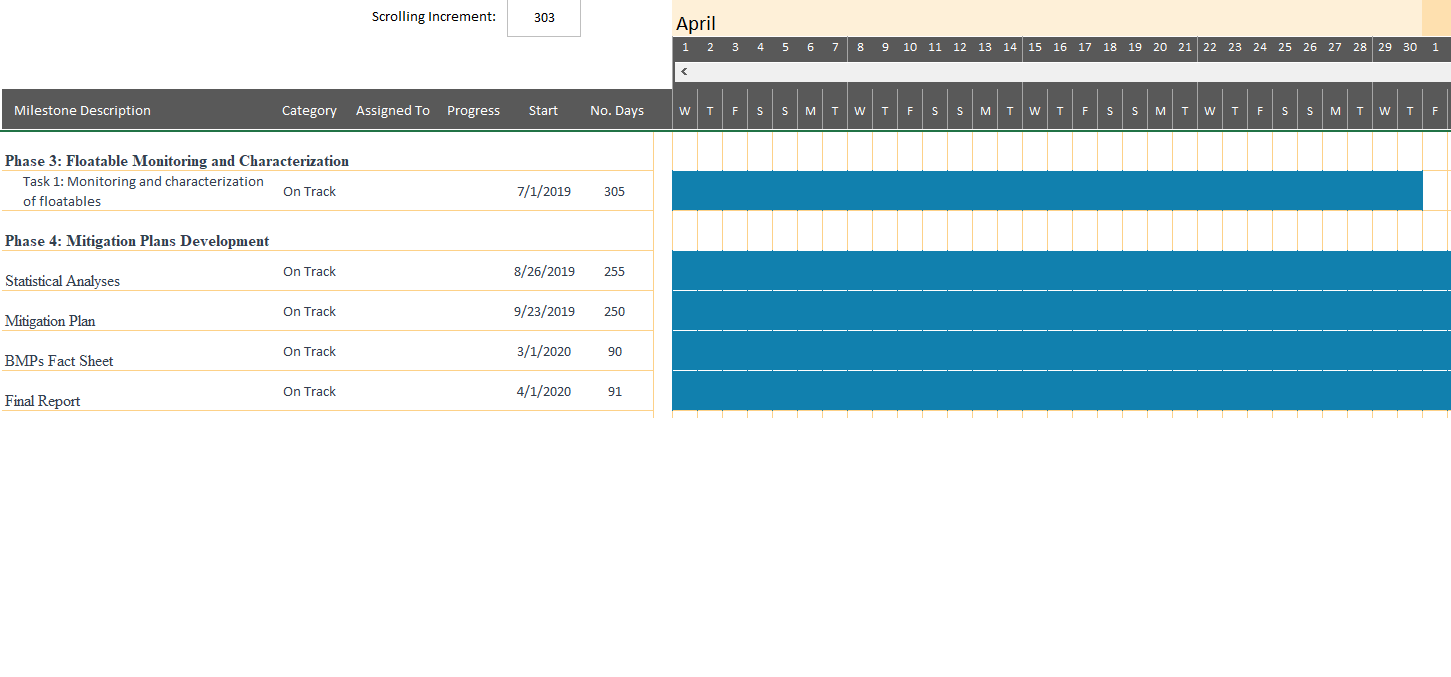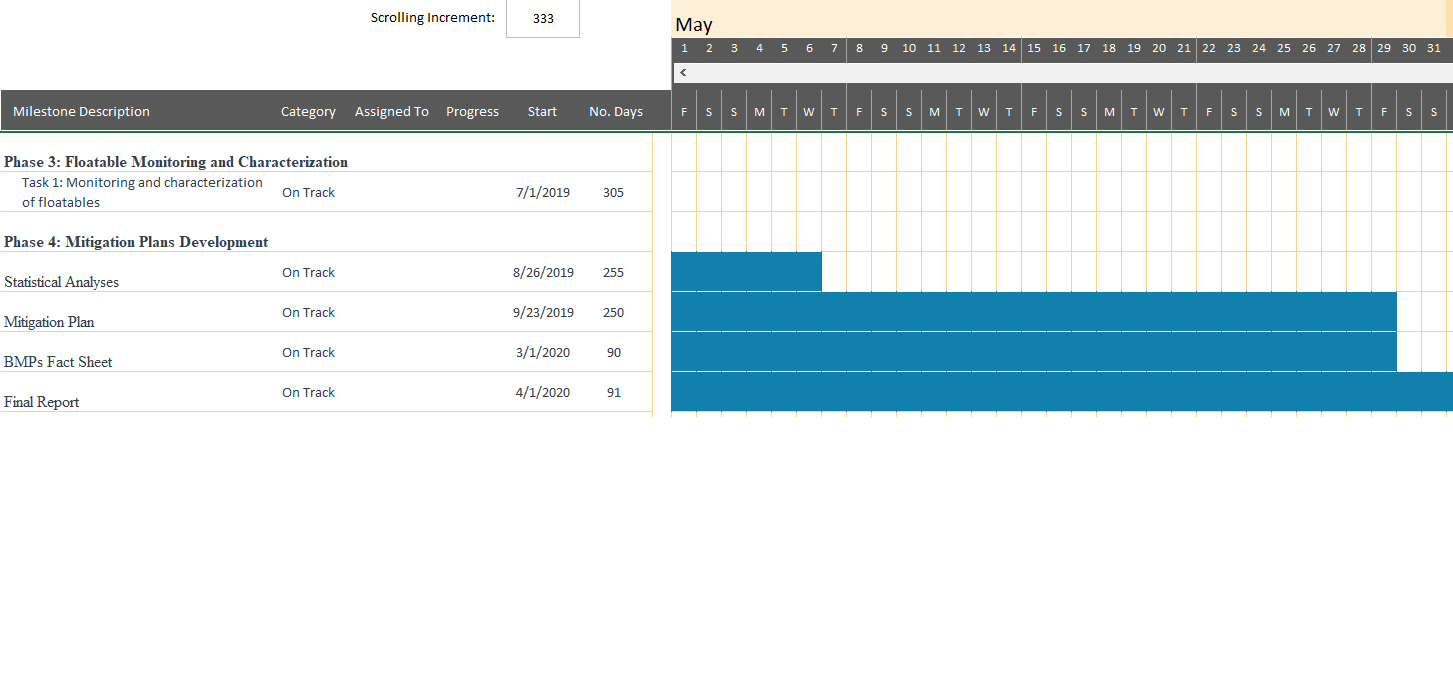Title: Puerto Rico Integration Trash Free Waters/Floatables
Characterization at Two Floood Control Pump Stations
Duration: June 1, 2019 to June 30, 2020
Sponsoring Agency: United States Environmental Protection Agency (EPA)
Project Strategy, Technical Assistance
and Training Approaches
1. Project Narrative
The Department of Natural and Environmental Resources (DNER), owns and operates 14 Flood
Control Pump Stations (FCPS) located at different locations around the island of Puerto Rico.
These FCPS are designed to convey floodwaters during extreme weather events to protect life and
property within their drainage areas. The flow to and transferred by the DNER FCPSs originates
from urbanized areas of the municipalities separate storm sewer systems (MS4s) and the
Department of Transportation and Public Works (DTPW) of the Commonwealth of Puerto Rico,
thus DNER does not control or own the stormwater sewer system or connections discharging to
the DNER FCPSs.
Floodwater often contains solids and large amounts of fibrous materials, like branches, leaves,
weeds, trash, dirt, and sediments such as sand, silt, mud, and soil. These stormwater pollutants
can get caught in the sump pump and bar screens making the system more susceptible to flooding.
Floatable debris can also harm physical habitats, transport chemical pollutants, threaten aquatic
life, and interfere with human uses of river, marine, and coastal environments. Plastic is known
to have the greatest potential to harm the environment, wildlife and humans.
On December 23, 2015, the Environmental Protection Agency (EPA) took a civil action (signed
by the Judge on June 29, 2017) against the DNER for discharges of extremely large volumes of
storm water heavily contaminated with raw sewage from two of its FCPS located in San Juan in
violation of the CWA. These discharges flow into waters in and around San Juan, including the
San Juan Bay and the Martín Peña Channel, as well as onto the Condado Beach (a major tourist
beach) and into the Atlantic Ocean. Recognizing the impact of floatables to the operation of the
FCPS, EPA required the DNER, as part of the injunctive relief, to submit a protocol and report for
monitoring and measuring floatables and install necessary controls in the FCPS subject to the civil
action. These measures will prevent significant amounts of undesirable solids (e.g., sludge,
garbage) from entering the above-named water bodies each year. The implementation of the
Consent Decree provides greater protection of the San Juan Bay Estuary (a federally-identified
estuary of national significance) and its intended designated uses.
This pilot project aims to characterize the total amount of floatables that reach the FCPS and
develop mitigation plan and management alternatives. The FCPS of this project are Juana Matos,
within the San Juan Bay Estuary (SJBE) study area in Cataño municipality, and FCPS El Guapo
in Salinas, a municipality located in the PR’s south area (please noticed that these two FCPS are
not under the Consent Decree). These two environmental justice communities were severely
flooded during hurricane Maria. Data collected will allow to compare debris behavior in rainy-
North and dry-South areas, and it will be useful to develop mitigation plans focused on reducing
the land-based types of products and packaging that end up at the discharge point of the FCPS and
that has the potential to be discharged into receiving waters. The data gathered will help also to
identify pollutant sources and to develop a fact sheet with BMPs to to create controls to reduce the
amount of floatables reaching the FCPS and consequently the receiving waters. This project seeks
collaboration among the stakeholders that are part of the TFW efforts island-wide to accomplish
proposed actions contained in the 2015 Summary of proposed actions for EPA TFWs such as to
Develop Database/Information Resource Pertaining to Island-wide Aquatic Trash Prevention and
Reduction Efforts. The SJBE Program, the UW Ambassador and the UW coordinators will provide
assistance and support to the University of Puerto Rico at Mayaguez (UPRM), which is one of the
stakeholders of the PR Trash Free Waters initiative, to recruit volunteers for the project that will
be developed in the Cataño municipality. Also, can provide their expertise that would help the
UPRM in the recruitment in the Salinas area. There are much more FCPS around the island with
the same problems impacting environmental communities and that are very vulnerable to bad
weather conditions, therefore this project has a great potential to be replicated in other FCPS
belonging to the DNER and municipalities of Puerto Rico.
Around 40 volunteers will be recruited for this effort (20 for Cataño area and 20 for Salinas). The
volunteers will be trained on floatable characterization protocols. Twenty-two visits are proposed
for both sites, one every two weeks for eleven months (June 2019 to April 2020). This schedule
will allow for varying raining seasons and community behavior through out the duration of the
project. The collected data will be statistically analyzed, and mitigation plans developed.
Table 1. Work Plan
| Phase/Task |
Description |
Stakeholders |
| Phase 1 |
Preliminaries (administrative procedures and meetings |
|
| Task 1 |
Account creation and other administrative procedures |
UPRM
PRWRERI
|
| Task 2 |
Coordination meeting with SJBEP and PUCPR
- Present project
- Coordinate and assign responsibilities
- Develop volunteer recruitment strategies
- Coordinate and develop training workshops (two
sessions - one in San Juan, one in Salinas)
|
PRWRERI
PR-TFW
DNER
PUCPR
SJBEP
|
| Task 3 |
Coordination meeting with PRDNER (San Juan)
- Present the project
- Identify relevant information/reports/manuals/guides
from DNER
- Coordinate two field visits
- Observe operational status of FCPS
- Determine sampling points
- Gather O/M information
- Determine drainage area limits
- Asses storm sewer system condition (Catch
Basins, Manholes, Screen Bars, etc.)
|
PRWRERI
PR-TFW
DNER
|
| Phase 2 |
Volunteer Recruitment and Training |
|
| Task 1 |
Develop safety plan/protocols |
PRWRERI
DNER
|
| Task 2 |
Conduct volunteer training sessions (half day)
- Present project
- The problem - Status, information, studies, US' and
PR's statutes and regulations
- Safety protocols
- Characterization of floatable trash protocols
|
PRWRERI
DNER
USEPA
PRDNER
PR-TFW
|
| Phase 3 |
Monitoring and Characterization |
|
| Task 1 |
Monitoring and characterization of floatables
From July to May @ two visits/month/site (44 visits) |
SJBEP
PUCPR
PRWRERI
DNER
|
| Phase 4 |
Migrations Plans Development |
|
| Task 1 |
Statistical Analyses |
PRWRERI |
| Task 2 |
Mitigation Plan |
SJBEP
PUCPR
PRWRERI
|
| Task 3 |
BMP's Fact Sheet |
SJBEP
PUCPR
PRWRERI
|
| Task 4 |
Final Report |
SJBEP
PUCPR
PRWRREI
|
As shown in Table 1, the project is comprised of four phases. Each phase has from one to four tasks.
The duration of the project is set to thirteen months as shown in Table 2 and the Gantt Chart pictures below.
Table 2. Project Phases Duration
| Phases |
Description |
Duration in Months |
| 1 |
Preliminaries (administrative procedures and meetings |
0.50 |
| 2 |
Volunteer Recruitment and training |
0.75 |
| 3 |
Floatable Monitoring and characterization |
11 |
| 4 |
Mitigation Plans Development
(starting shortly after Floatable Characterization Site
Visiits and finishing two months after the site visits are
concluded)
|
10 |
